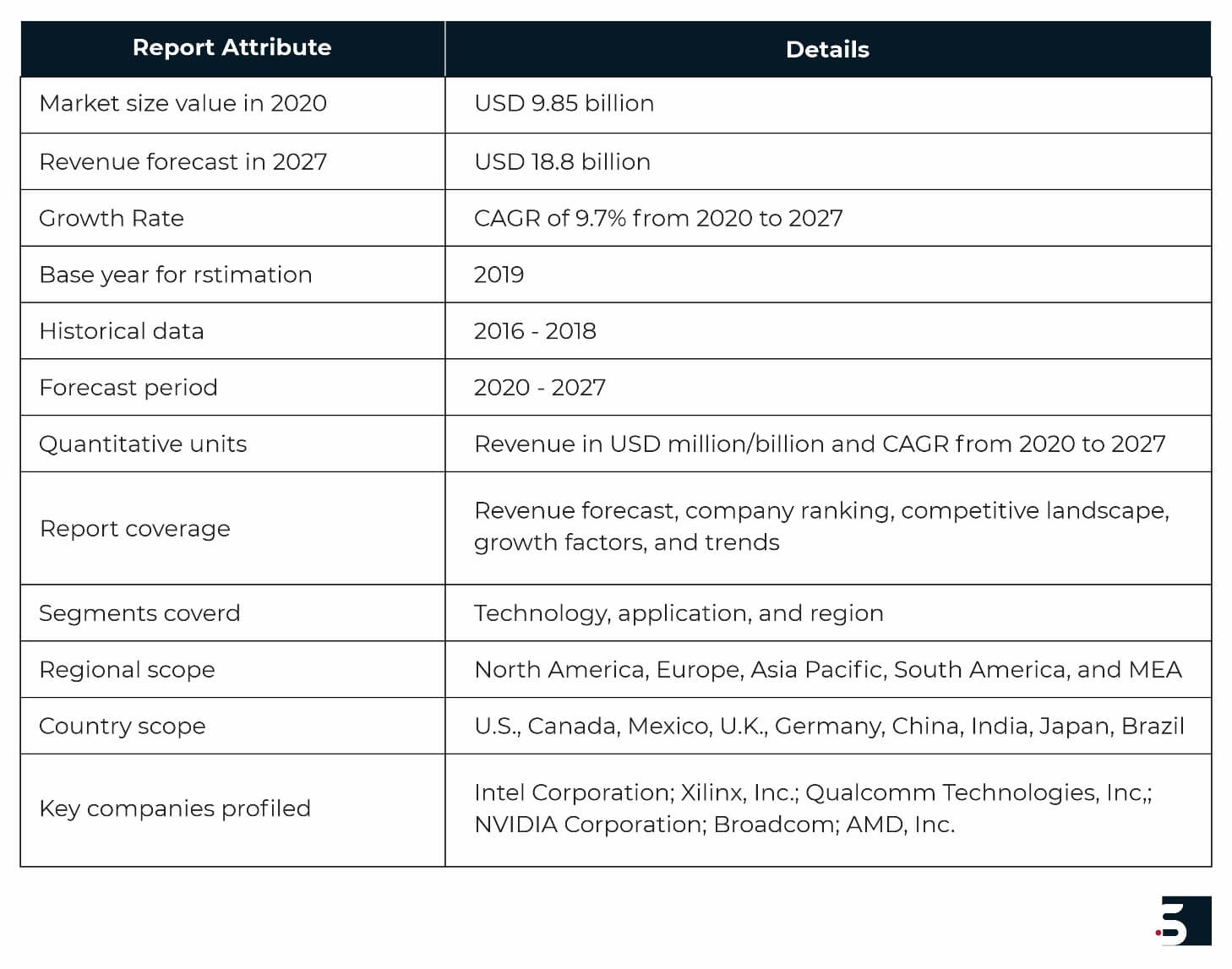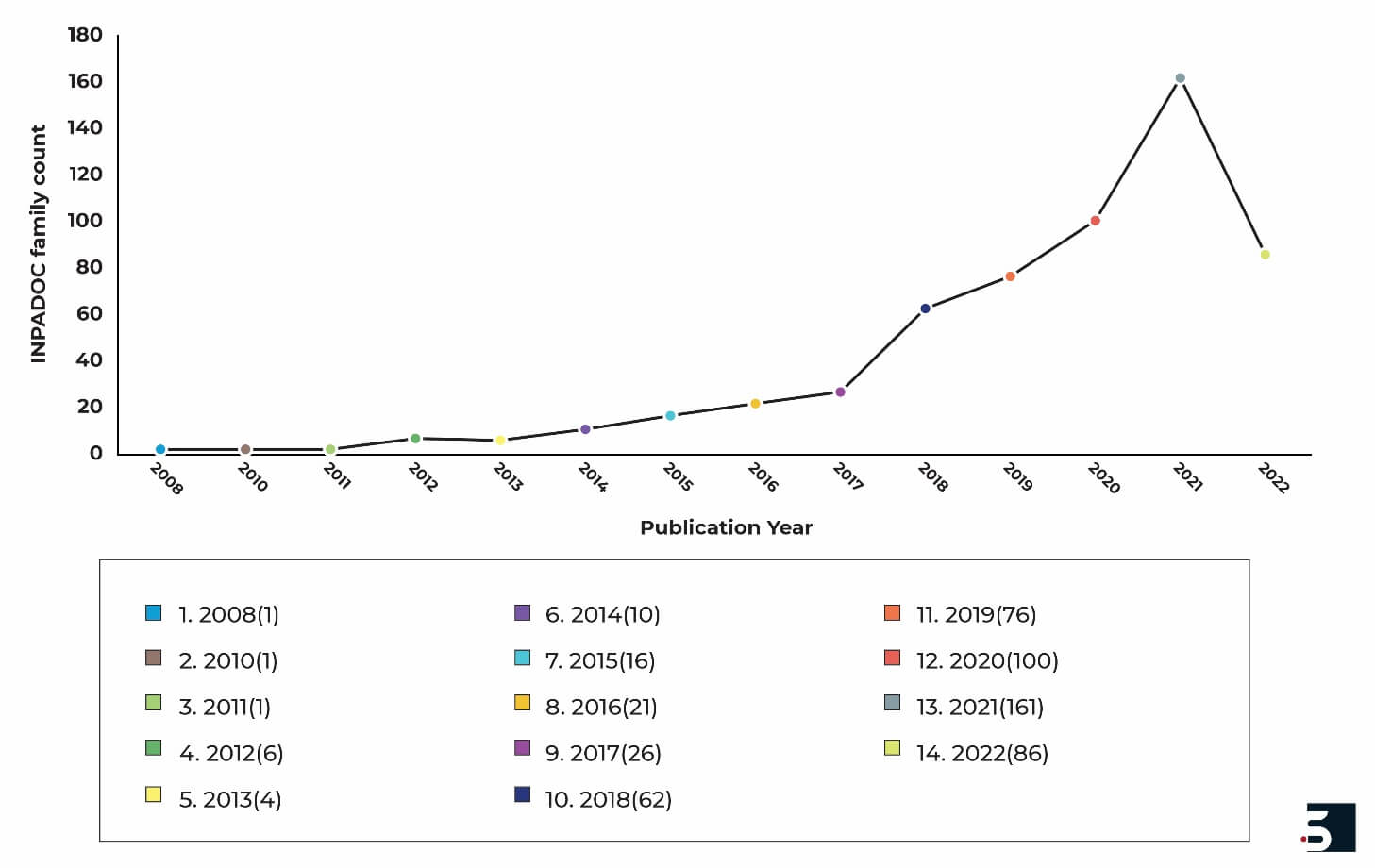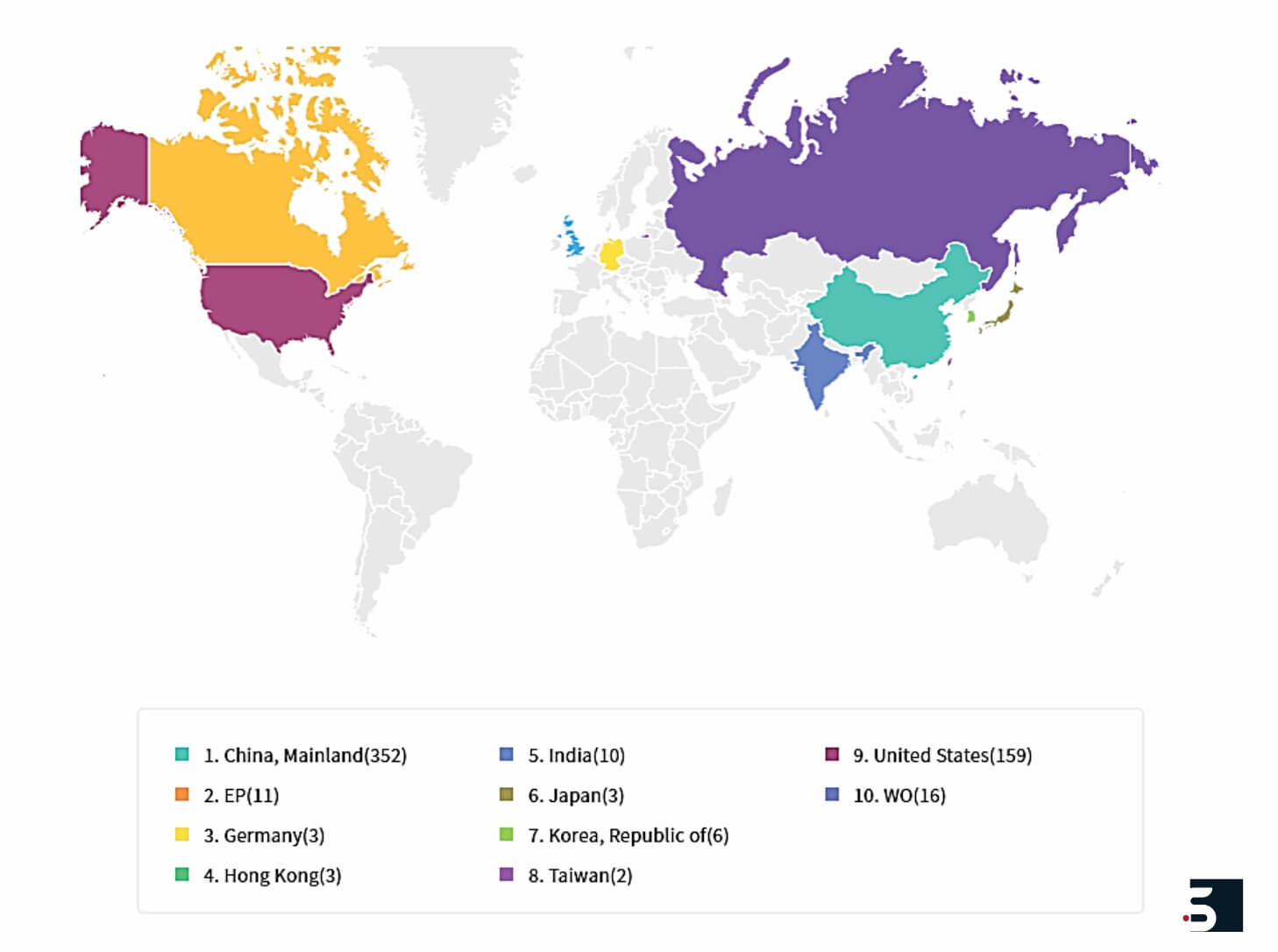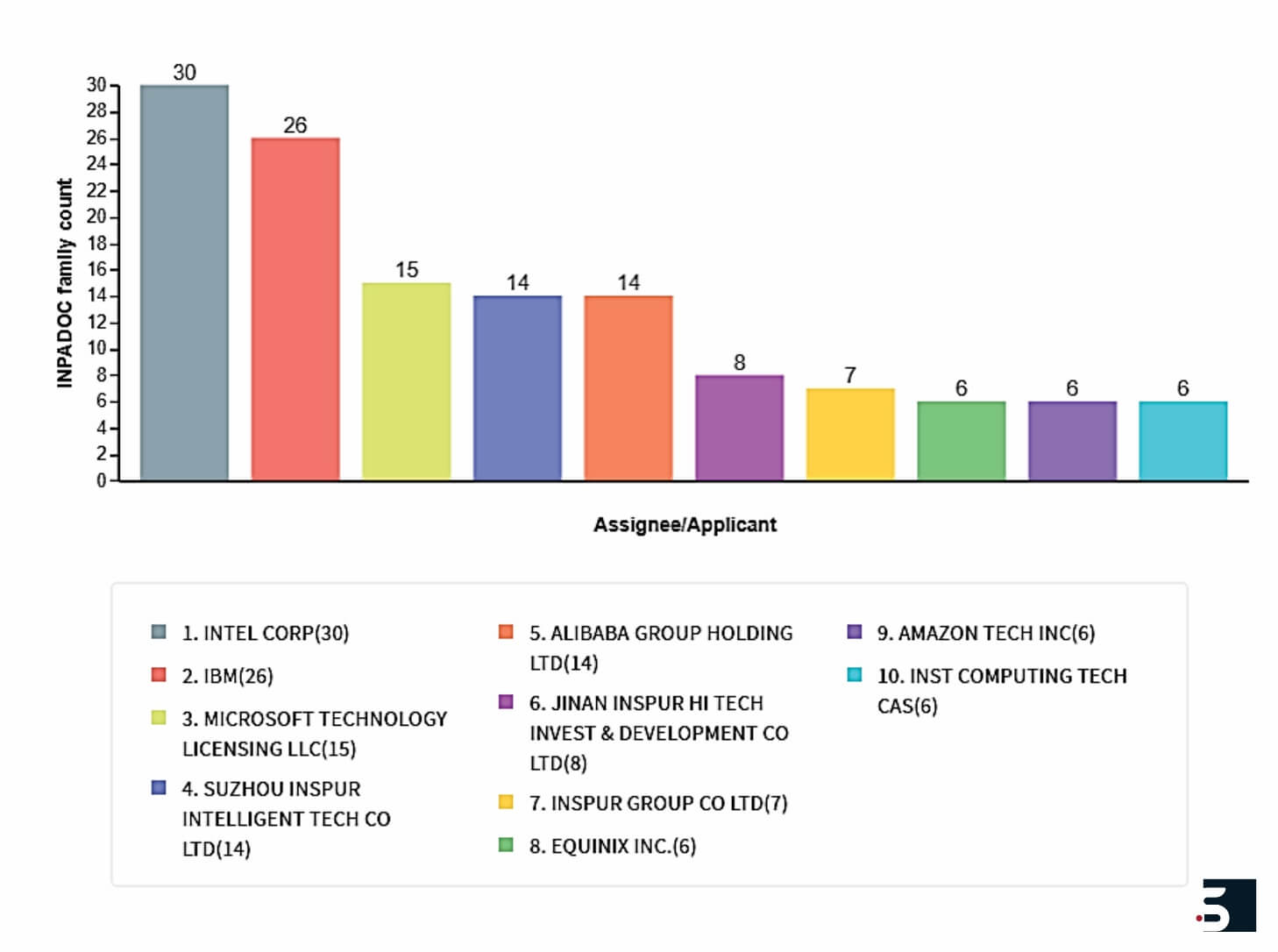FPGA-based Cloud Computing Innovations: Market and Patent Trends
FPGAs, short for Field-Programmable Gate Arrays, are becoming increasingly popular in cloud computing. Its market size has grown significantly, both in terms of technology and application, and the revenue forecast is estimated to reach USD 18.8 billion by 2027. Some of the world’s largest corporations, including Microsoft, IBM, and Intel, have invested in developing this technology. As a result, the number of cloud computing innovations in FPGA has seen a significant increase – which can be affirmed based on the patent filing trends that we present in this article.
Read on to know more about the advancement of FPGA in cloud computing, including its advantages, applications, market growth, top patent assignees as well as its future prospects.
Table of Contents
Understanding FPGAs
These are semiconductor devices consisting of a matrix of CLBs or configurable logic blocks connected by programmable interconnects. Post manufacturing, FPGAs can be reprogrammed to meet specific application or functionality needs. A standard chip, such as the Intel Curie module in a CPU, is fully baked. The Intel Curie module is a tiny hardware product offering design flexibility. However, its chip is unprogrammable. With these chips, a user can write software that loads onto a chip and executes functions. That software can later be replaced or deleted, but the hardware chip remains unchanged.
There is no chip in an FPGA, and the user can program the hardware circuit or circuits. This programming can be as simple as a single logic gate (an ‘AND’ or ‘OR’ function) or can include one or more complex functions, including ways that combine to serve as a comprehensive multi-core processor.
In the following section, we will discuss the growing role of FPGA in cloud computing and highlight how these are taking over the space.
Role of FPGA in Cloud Computing
FPGAs are becoming increasingly common in cloud computing, and new usage paradigms, such as FPGA-as-a-service, have emerged. Due to their versatility and capacity to support numerous cloud computing models, FPGAs are a great introduction to high-performance computing in the cloud. Moreover, FPGAs have also been integrated into cloud infrastructure to improve computing performance by enabling on-demand acceleration. Integrating FPGAs with commercial cloud computing platforms, such as Amazon Web Services (AWS), Huawei Cloud, and Alibaba Cloud, is also a rapidly emerging trend. Cloud FPGAs enable cloud users to create hardware accelerators to boost cloud computation. Hardware acceleration is a process in which applications offload specific tasks to hardware in the system, significantly accelerating those tasks. The cloud FPGA system is built on three main pillars:
- The use of standalone network-attached FPGAs
- A hyper-scale infrastructure for deploying the FPGAs mentioned above at a large scale
- An accelerator service that integrates as well as manages the standalone network-attached FPGAs in the cloud at a low cost.
Now let us dive into the myriad benefits of FPGA-related cloud computing innovations.
Advantages of FPGA
FPGAs have several benefits that make them appealing in a variety of applications. Some of the major advantages are as follows:
- Long-term availability: The functionality of an FPGA is not found in the module itself but rather in its configuration. This allows the user to be independent of component manufacturers. Thus, users can program FPGAs without adjusting the gate arrays.
- Updates and adaption: FPGAs are entirely programmable in contrast to traditional computer chips. This permits customized updates and modifications as per the customer’s request, even after delivery.
- Short time to market: Since designing the IP cores is part of the hardware development process, usage of FPGAs considerably speeds up the creation of prototypes. It allows for the simultaneous execution of time-consuming tasks, such as commissioning and troubleshooting.
- Fast and efficient systems: Since standard components are built for the largest possible user group, there is generally a compromise in performance and compatibility. However, FPGAs enable the development of systems tailored to perform specific tasks, resulting in enhanced efficiency.
- Acceleration of software: Software applications with quick processors can commonly perform complex tasks. FPGAs provide a more cost-effective alternative that significantly increases speed through parallelization and application-specific adaptation.
- Real-time applications: FPGAs are ideal for use in time-sensitive systems. Unlike software-based solutions with real-time operating systems, FPGAs can deliver truly consistent performance. Owing to this flexibility, FPGAs can perform complex computations in a very short amount of time.
Getting familiar with real-world applications can aid in strengthening the understanding of FPGA benefits. The following section discusses FPGA application areas of FPGA-related cloud computing innovations.
Application Areas of FPGA
FPGAs are used in a variety of applications, such as:
- Video and Imaging equipment to circuitry for computers
- Genomics and molecular dynamics
- Machine learning and data analytics
- In-network data processing
- Aerospace, defense, and military areas
- Industrial motor control
- Medical electronics
- Scientific instruments
- Cyber-security systems and wireless communications
- Multiple sensor dome cameras, HD (High Definition) cameras, and night-vision cameras
In the following section, we will highlight the significance of FPGA in cloud computing, and how some of the biggest tech companies in the world are implementing it in their services.
FPGA Offerings in Cloud Computing
FPGA is considered an essential technology pathway for accelerating cloud computing because of its many benefits. It is also where the journey to “FPGA in the cloud” begins. Some of the major companies that are utilizing FPGAs in cloud computing innovations are mentioned below:
1. Two existing cloud service providers’ FPGA offerings take different approaches to how these can be made available to users. One is Amazon Web Services (AWS), which includes FPGAs in their F1 instances. It follows a platform-as-a-service (PaaS) model. Users can request F1 instances and run their code directly on these FPGAs using Amazon’s infrastructure. F1 is a compute instance with FPGAs that can be programmed to create custom hardware accelerations for the application.
2. Second is Microsoft, which provides FPGAs in the cloud following a software-as-a-service (SaaS) model as part of Project Catapult. Microsoft Azure applications and Bing searches may be accelerated using FPGAs without the user knowing what processing units are used. Microsoft engineers make the implementations and provide these implementations as a service. A Microsoft Research (MSR) enterprise-level initiative known as Project Catapult aims to revolutionize cloud computing by enhancing CPUs with a connected, programmable compute layer composed of silicon.
In a 2014 paper, Microsoft shared that its Project Catapult team deployed FPGAs in 1,632 servers in a data center to facilitate hardware acceleration to ranking calculations for the Bing search engine. They achieved up to a 95% increase in throughput.
3. Tencent was one of the earliest internet companies in China to try FPGA-accelerated computing. In their JPEG to WebP network picture transcoding attempts, FPGA processing latency was 20 times faster, and processing performance was six times superior than with CPU. Furthermore, FPGA unit costs are only a third of those of general-purpose CPUs. Subsequently, Tencent has become one of the most active supporters of FPGA-accelerated cloud computing. Case studies like these have significantly increased market confidence in deploying FPGAs in other cloud computing platforms.
4. Oracle has introduced a Fast Loader project which aims to develop an FPGA offload engine to accelerate existing software in various high-value applications, such as relational databases, main memory algorithms, and big-data applications. The aim is to improve cluster performance and application scaling, and to reduce system power needs. This is achieved using reconfigurable computing built using FPGAs and many-core processors.
5. Xilinx and IBM offer FPGA-based acceleration within SuperVessel, the OpenPOWER Development Cloud. As a first-of-its-kind open-access cloud service, SuperVessel serves as a virtual R&D engine for application developers, including those working on the Internet of Things, deep analytics, and machine learning applications.
6. The Xilinx SDAccel Development Environment is an extensive software-defined IDE (Integrated Development Environment) that enables developers to compile, debug, profile, and deploy FPGA-based acceleration. SDAccel in the SuperVessel cloud is a powerful component for developers to quickly create and accelerate applications employing FPGAs. The combination of the SuperVessel, SDAccel Development Environment, IBM POWER architecture, and Xilinx FPGA accelerator boards provide application developers with high throughput and high availability cloud-based platforms to develop and execute compute-intensive applications.
The FPGA market has showcased steep growth in the past few years. The next section delves into FPGA market trends.
FPGA Market – Growth, Trends, and Forecasts
With the growing applications of FPGA, its market size is also expanding rapidly. The growing adoption of field programmable gate arrays in areas of security, deep packet inspection, and network processing is anticipated to drive their demand over the forecast period. Increasing adoption of FPGAs in the military and aerospace application areas, such as waveform generation, image processing, and secured communication, is also expected to boost the FPGA market growth over the next few years.

FPGA Patent Filing Trends by Assignees and Jurisdiction
To understand a little bit about the intellectual property aspect of this technology, Sagacious IP performed a broad study of the companies that have invested in patent filings of this technology. Below are the findings of this research.
Patent Publishing Trends

As evident from Figure 2 above, FPGA patent publishing has been growing rapidly since 2017, reaching its peak at 161 in 2021.
Top Countries/Regions

Figure 3 above testifies to China’s dominance in FPGA-related cloud computing innovations.
Top Assignees

Chinese and American companies, such as Intel, IBM, Microsoft and Alibaba, lead the list of top FPGA patent assignees around the globe.
Future Prospects of FPGA
Cloud is the future of high-performance and scientific computing. Various cloud computing innovations have emerged to help the world move towards more sophisticated computing. This includes FPGA, which is reconfigurable hardware that can be adapted to user applications. Disaggregated data centers with network-connected memory and accelerators are already replacing server-centric architectures by providing greater resource use. Disaggregation also opens up new research directions, including assigning and scheduling jobs to processors, be it CPUs, GPUs, or FPGAs, as well as writing applications that target each type of accelerator.
Security is also a challenge when there are many devices directly connected to the network and one another. Cloud users of the future will be able to take advantage of a computer platform with fewer memory barriers and the processing power to deliver graph processing, machine learning, security, and privacy applications on large data, as well as accelerate scientific applications and new applications.
FPGAs are gaining prominence in fields, such as deep neural networks (DNNs), which are used for artificial intelligence (AI), in which running DNN inference models takes significant processing power. Graphics processing units (GPUs) help accelerate inference processing, but in some cases, high-performance FPGAs might outperform GPUs in examining large amounts of data for machine learning.
Conclusion
FPGA has demonstrated its strength in real-world applications and has become the go-to architecture for emerging cloud services today. The presence of FPGAs in cloud computing innovations is growing rapidly, and appears to be just the beginning. Some of the world’s largest tech companies are already developing FPGA-based cloud computing innovations. Any organization that leads the patent filing race now is likely to enjoy an upper hand over its competitors in the future.
This is the data age where how a company produces, stores, and applies knowledge in real-world situations determines its success. For optimal benefits, it is crucial for businesses to monitor their technology and continue developing. Employing Sagacious IP’s technology scouting service is the quickest way to develop a strong patent portfolio, whether it is in cloud computing innovations or other technologies. We have partnered with several multinational companies to secure their IP as technologies in their respective domains evolve. Reach out to us to know more.
– Akanksha Verma, Rachita Goel (ICT Licensing) and the Editorial team
Having Queries? Contact Us Now!
"*" indicates required fields




